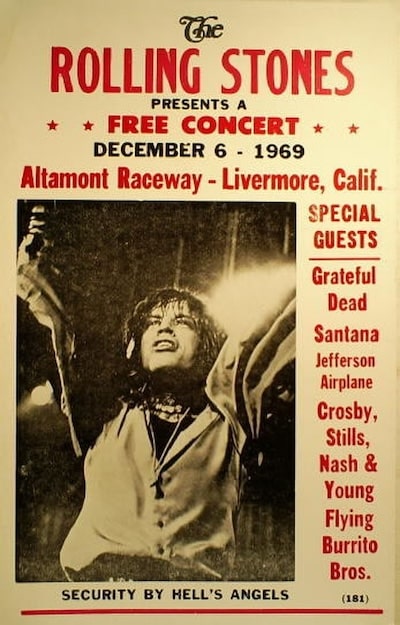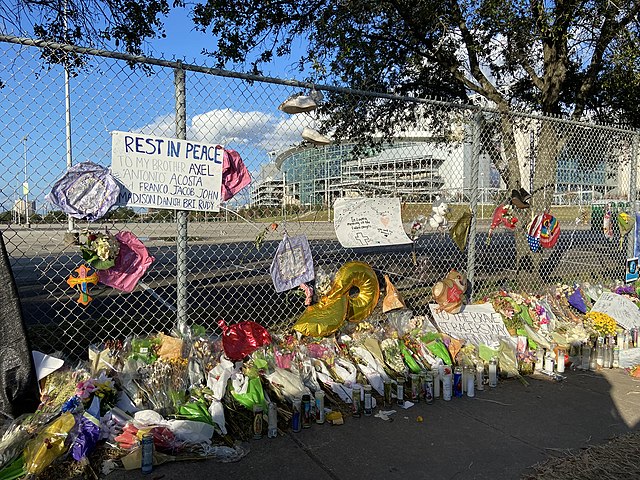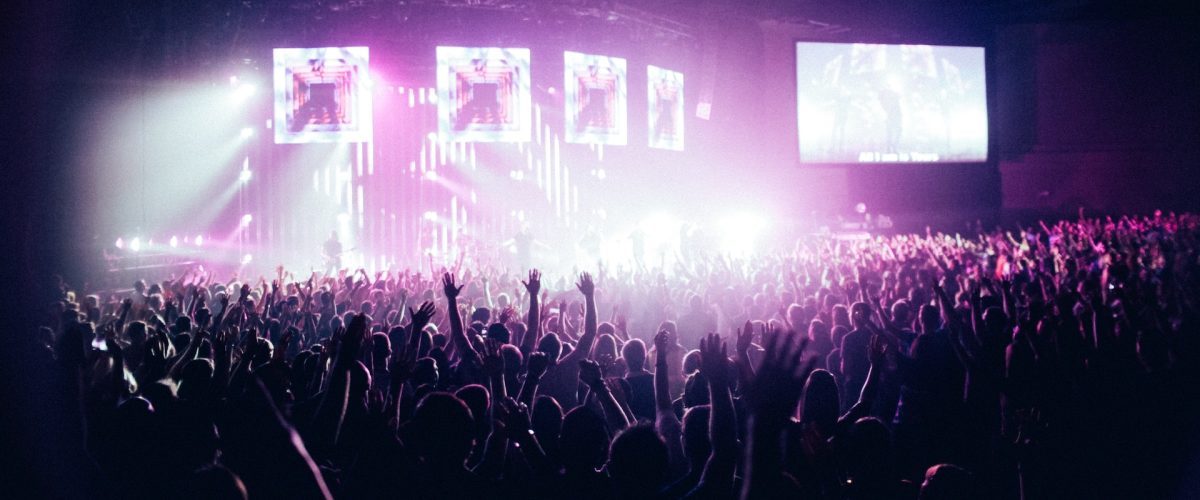Music festivals are memorable and celebratory events, where artists and fans unite under the love and appreciation of music. While the intent is to create memories for loyal music enthusiasts, with poor planning, disorganization, and disregard for safety, mixed with unpredictable weather and other disastrous circumstances, music festivals can quickly become disasters with harm and danger for attendees. Below we will look at a chronological timeline of 5 infamous music festival disasters, discuss what circumstances led to each mishap, and what we learned from them.
Music Festival Disasters Can Be Prevented with Good Planning and Incident Action Plans
As you read through the following festivals and concerts, the failure to plan adequately with contingency plans for any foreseeable incident will quickly become apparent. Remember, it’s the job of the festival organizer or promoter to keep attendees, staff, and performers safe from foreseeable things that might happen before or during the festival.
1. Altamont Free Concert – 1969

There were several reasons for the Altamont Free Concert disaster: poor organization, violence from The Hells Angels, and drug use. Unlike Woodstock, which occurred months earlier, the organizers of the Altamont Free Concert didn’t settle on a venue until two days before the event. The festival organizers originally wanted the festival to occur in Golden Gate Park in San Francisco, but permits were never acquired. Due to the lack of planning and organization, the festival was largely improvised. On top of this, the festival organizers decided to hire dozens of members of the Hells Angels, a motorcycle gang, to function as informal security staff in exchange for $500 worth of beer as a gratuity.
Tensions between The Hells Angels and the crowd had intensified throughout the concert, leading to violence and aggression. At one point, the Hells Angels began arming themselves with sawed-off pool cues and motorcycle chains and would beat anyone who got too close to the stage or their motorcycles. This growing tension erupted with a confrontation between Meredith Hunter, a Black 18-year-old attendee, and The Hells Angels. Hunter was beaten up by members of The Hells Angels and consequently pulled out a gun to try to get away from them. But during The Rolling Stones set, Hunter was stabbed to death by a 21-year-old Hells Angel named Alan Passaro, just 20 feet from the stage.
The Altamont Free Concert is a reminder that hiring proper security, implementing crowd control measures, and knowing how to plan large-scale events are pivotal to the success of an event and the safety of festival goers. The unfortunate events that unfolded additionally highlight the necessity of working alongside law enforcement to provide a safe environment for attendees.
Woodstock – 1999
Perhaps one of the most infamous festival disasters, Woodstock ’99 was held in Upstate New York in July 1999. Though aimed to celebrate the original Woodstock’s 30th anniversary, the music festival devolved into a disastrous event. Organized by John Scher and Michael Lang, a co-founder of the original Woodstock festival, it was more profit-driven than its predecessor. Hosted at the Griffiss Air Force Base in Rome, New York, the festival experienced scorching temperatures exceeding 100 degrees, resulting in dehydration, injuries, sexual assault, and deaths.
Overcrowding was a significant problem at Woodstock ‘99, with over 400,000 people crammed into the venue, although only 250,000 tickets were sold. Counterfeit tickets worsened the situation, leading to resource shortages, like food and water. The choice of venue, which lacked shade or grass, intensified the heat, making the tarmac an oven for the hundreds of thousands of festival goers and causing mass dehydration. Access to water was limited, and attendees had to trek long distances from the stages to find water spigots or purchase water for $4 a bottle.
Price gouging was a major issue at Woodstock ‘99 and the high costs of food and water led to the growing tension amongst the festival goers. The festival also had a major trash problem, becoming a cesspool of litter and garbage that was left outdoors in the high temperatures. Additionally, any running water that was available was contaminated by the sewage overflowing from the portable toilets. Beyond all these health and sanitation concerns, there was a serious air of violence at Woodstock ‘99. For starters, misogyny was rampant, with numerous reports of sexual assaults coming out of the festival, creating a dangerous environment for women festival goers. To make matters worse, security proved to be a major issue, with untrained security teams who didn’t know how to manage the crowds and handle these dangerous situations.
The general musical atmosphere, with the lineup of nu-metal bands such as Limp Bizkit, is also blamed for riling up the toxic masculine and agitated crowd. These growing tensions took a turn for the worse when riots broke out, fires were set, trucks and other vehicles were overturned, and many were injured. By the end of the festival, three people died, hundreds were treated for heatstroke and dehydration, and multiple women were sexually assaulted.
This video tells the story:
The disasters that unfolded at Woodstock ‘99 can teach us lessons about how to organize a safe and enjoyable music festival. Proper infrastructure, trained security, crisis management measures, and selecting the appropriate venue and layout for a festival are of utmost importance. There is a real necessity to create a safe environment for all attendees, with all amenities sorted out and carefully planned to ensure a positive experience.
TomorrowWorld – 2015
In 2015, Chattahoochee Hills, Georgia hosted TomorrowWorld, an EDM Festival that didn’t turn out as planned. Over the days of September 25 through September 27, chaos ensued as heavy rainfall led to a plethora of issues at the festival. After the end of Saturday’s set, the heavy rain left the campgrounds a muddy slush, leaving the 8000 acres of Chattahoochee Hills inhabitable for both the festival and attendees. Though festival goers attempted to flee the area, relying on shuttle buses and rideshare services to get them to safety, they would soon find this more difficult than expected.
Due to poor organization, non-camping attendees were unable to leave the campgrounds because organizers prevented rideshare services and shuttle buses from accessing pick-up locations. This led to festival goers having to travel miles through the mud and rain in order to access rides home. Thousands of festival attendees had to spend their nights stranded without food, water, or shelter, and could not get home to safety.
During those hours of being stranded, several sexual assaults and injuries were reported. There was no police presence as thousands of people walked on the streets almost getting hit by cars. The festival organizers offered no guidance, no communication, and had no contingency plan in place to safely move people out of the festival. The festival was canceled the next day to all non-campers, resulting in many ticket holders demanding a full refund of their tickets.
There are several lessons to be learned from TomorrowWorld. Firstly, if you’re organizing a festival, contingency plans should be put in place, and you must be prepared for weather incidents. Having an outdoor festival is a risk, and weather can cause major problems, so improving infrastructure to withstand weather issues, creating evacuation procedures, and clearly communicating with attendees in times of adverse weather is important.
Fyre Festival – 2017
The Fyre Festival in 2017 was a huge scandal. Marketed as an exclusive and luxury music festival, the Fyre Festival was supposed to happen in the idyllic, tropical atmosphere of the Bahamas. Festival organizers Billy McFarland and Ja Rule promised high-class accommodations, gourmet food, and a lineup of A-list artists. Guests ended up paying thousands of dollars, some up to $100,000 per ticket for what they thought would be a party for young, elite festival goers.
Supermodels such as Bella Hadid, Kendall Jenner, and Emily Ratajkowski appeared in promotional content for the festival, showing the scenic landscape of the Bahamas. Such promotional efforts made the Fyre Festival seemed legitimate. However, when the thousands of festival goers arrived, they were met with mass disorganization. Though promised luxury villas, as they had paid for, festival goers were met with a “tent city,” and were scrambling to claim a limited number of disaster relief tents. Some of the tents even had wet mattresses in them that were left out in the rain. Additionally, attendees’ luggage was reportedly missing or was being dumped out of shipping containers in a disorganized fashion. There were also issues with accessing water and the promised gourmet dining didn’t happen. Additionally, all of the A-list performers, such as Pusha T, Tyga, Migos, and Blink-182, had dropped out of the festival days before, leaving festival goers stranded, in tents, with no real music festival actually happening.
One lesson that can be taken from the Fyre Festival disaster is to maintain transparency. As a festival organizer, it’s important to be honest with expectations when marketing and promoting the event. Don’t overpromise and underdeliver as the Fyre Festival organizers did. Be upfront about what attendees should expect to avoid any disappointment or frustration on their part. In times of crisis, it’s important to clearly communicate and not leave attendees in the dark to fend for themselves. Additionally, consider the customer experience. At Fyre Festival the festival goers’ basic needs were neglected, with little access to water and food, and given pitiful living accommodations. Take care of your attendees and prioritize comfort and safety. Overall, what we can learn from this is to adequately plan, conduct venue inspections, organize all the logistical elements of the event, and ensure all the details and aspects of the event are prepared and set in place before the event begins.
Astroworld – 2021
In November of 2021, tragedy unfolded at Travis Scott’s Astroworld Festival in Houston, Texas. Over 50,000 attendees gathered at the third annual festival. Signs of crowd control issues rose throughout the day as people hopped turnstiles and snuck into the sold-out festival. The overcrowding and crowd size was the catalyst for the tragedies that would ensue. Festival goers reported an intense “mob mentality” that was festering throughout the day, with people willing to do whatever to access food and merchandise, leading to multiple fights breaking out. The overcrowding, combined with this energy of rage and angst, which are not uncommon during Travis Scott concerts, was a recipe for disaster at Astroworld.
Due to the capacity of people who attended Astroworld, crowd surge occurred. Crowd surge happens when a large group of people is densely packed into a tight space. Many also uphold that this phenomenon occurs when people are either running away from a perceived threat or toward something they want (like a performer) before hitting a barrier, creating this surge. Around 9 pm, when the concert was beginning, the crowd started to “compress” towards the front of the stage, signaling the beginning of chaos. This compression was the start of a nightmare situation, where the crowd was moving like a wave, forward and backward. Fans started to crush each other, people were passing out, and many were unable to move within the crowd surge. A festivalgoer describes their experience, noting that “all of a sudden, your ribs are being crushed. You have someone’s arm in your neck. You’re trying to breathe, but you can’t.”

Festival organizers can learn a lot from the tragedy at Astroworld. One of the major concerns at a large-scale festival is how to manage the crowds. Implementing safety measures to prevent overcrowding and crowd surges by using adequate barriers, hiring experienced security teams, and working with emergency response teams are all ways to handle crowds. Knowing crowd behavior and how to anticipate how crowds may react in certain situations is also beneficial. Additionally, making sure the festival layout and stages are safe and logical, and ensuring that medical services are ready and accessible to festival goers are key. The Houston Police Department issues a 1,266-page investigative report on the tragedy. The deadly concert led to the adoption of a new event management agreement for large events at NRG Park in Houston.
Conclusion
While these are just a few of the infamous music festival disasters that have occurred over the years, they serve as cautionary tales for both festival organizers and attendees alike. All of these tragedies underline how important it is to prioritize the safety of festival goers. As a festival organizer, you are responsible for a large number of people coming to your event and must take the proper measures to maintain the safety, comfort, and well-being of your attendees. Meticulous planning, proper security, clear communication, and implementation of crowd control measures are all pivotal when planning a large-scale festival. Though these tragedies are deeply saddening, we can look to them as lessons learned in order to create safer and more enjoyable festivals in the future.
Some of these music festival disasters were the result of inexperienced festival promoters who obviously didn’t know how to put on a safe and successful festival. However, the Astroworld Festival promoter was Live Nation. It shows that even experienced festival promoters can’t rest on their laurels and must renew or review their contingency planning for each festival.
Related Posts:




